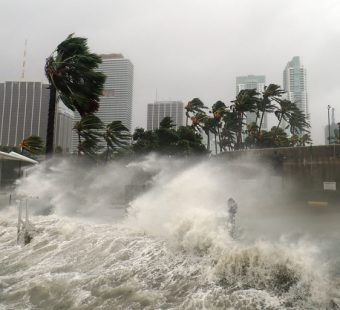
Mangrove Insurance: Mix of Parametric and Indemnity May Aid Coastal Resilience
Jeff Dunsavage, Triple-I Senior Research Analyst
10/28/2020
Earlier this year, I wrote about the role mangrove forests and coral reefs play in mitigating tropical storm damage and how insurance might help protect these critical resources. A recent Nature Conservancy study looks specifically at opportunities in mangrove protection and restoration and identifies where insurance could be used to support their resilience benefits.
In many places, mangroves are the first line of defense, their aerial roots helping to reduce erosion and dissipate storm surge. In Florida, one study found, mangroves alone prevented $1.5 billion in direct flood damages and protected over half a million people during Hurricane Irma in 2017, reducing damages by nearly 25% in counties with mangroves. Another study found mangroves actively prevent more than $65 billion in property damage and protect over 15 million people every year worldwide.
Unfortunately, they frequently fall victim to development that creates the greatest potential for storm-related losses.
The Nature Conservancy study describes the implementation of a coral reef insurance product in Quintana Roo, Mexico, and explores how the model could be adapted for mangrove preservation. In Quintana Roo, a trust fund accepts money from public, private and philanthropic sources, as well as a federal fee collected from beachfront property owners who wish to use the beach for commercial purposes. It uses those funds to buy the insurance – a parametric product that is triggered if wind speeds in a designated area exceed 100 knots.
Parametric policies cover risks without the complications of sending adjusters to assess damage after a catastrophe. Instead of paying for damage that has occurred, it pays out if certain agreed-upon conditions are met – for example, a specific wind speed or earthquake magnitude in a particular area. If coverage is triggered, a payment is made, regardless of damage. Speed of payment and reduced administration costs can ease the burden on both insurers and policyholders.
“Unlike coral reefs, however, mangroves do not usually require rapid post-storm interventions in order to survive,” the study says. This means an indemnity insurance policy might be created that delivers payments based on post-catastrophe assessments of mangrove damage. “There are a variety of insurance products available that can be tailored to meet the specific needs of mangroves, with initial payouts made quickly through parametric covers and assessed payouts made through indemnity cover at a later stage.”
Before a mangrove insurance policy can be developed and deployed, a full feasibility study would need to be conducted. The Nature Conservancy report recommends that this include “higher-resolution flood-risk models, estimation of the wind-reduction benefits of mangroves, and the construction of fragility curves to show the relationship between damage to a mangrove forest and some component of a storm event, such as storm surge or wind speed.”
Published on Oct. 29, 2020



